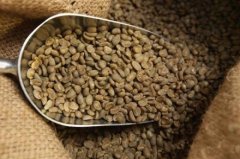Which tastes best, big granulated beans or small granulated beans?

The place of production has a high evaluation of coffee beans with large particles according to their size. " It is also said that the French taste of the sieve size (coffee bean size) has nothing to do with it. Now the Nordic countries, which are advanced coffee countries, purchase the most advanced coffee beans in Brazil and other places, mainly buying small pellet beans with a sieve size of 13-16. They avoid buying high-priced large granulated beans and buy cheap small ones instead, perhaps because they value quality over reputation.
But strictly speaking, large granulated coffee beans have a better flavor. In fact, the beans collected from the same coffee tree are baked and extracted, and the taste can be obviously compared after the cup test. Beans with large grains and smooth growth taste better.
When it comes to large-grained coffee beans, there are often high-quality beans like Marago Gippe (large granulated beans above sieve 19, also known as beans), which are twice as large as ordinary beans, which can cause uneven baking. therefore, it is recommended to pick out by hand in advance: but this is not to pick out defective beans, but to gather large grains of beans together and bake them separately.
When it comes to baking, rather than paying attention to the relationship between bean size and taste, the consistency of bean size is more important. Beans of different sizes should be separated from each other and should not be mixed and baked. Otherwise, it will inevitably lead to uneven baking results.
Similarly, it is better to have the same color of beans. The colors of raw beans are cyan, brown and other colors, and the color of beans represents water content, so it is easier to bake beans with the same color. Generally speaking, cyan and green indicate more moisture, while brown almost white represents less moisture.
Then there is the shape of the beans, and the meat should be thick. Even if the grains of beans are large, those with thin meat tend to taste thin. The flavor is rich and deep, generally speaking, only the fleshy coffee beans produced in the highlands. Kenya, Colombia, Tanzania and other Elaraby plus washable coffee beans are classified as "Colombian fresh and bright coffee" by the New York market; the meat is thick and the moisture content is high, so it is not easy to heat transfer in the center when roasting, but through excessive baking, it can lead to rich and varied flavor.
The last thing to mention is the central line (the longitudinal rill in the center of the coffee bean). Beans with a clear and clear central line are of high quality. In addition, the silver skin covered on its surface is literally silver. Most of the tea-brown ones with silver skin are defective, except for the well-managed natural drying beans.
Important Notice :
前街咖啡 FrontStreet Coffee has moved to new addredd:
FrontStreet Coffee Address: 315,Donghua East Road,GuangZhou
Tel:020 38364473
- Prev

How to select coffee beans by hand?
Hand selection: is the step of removing impurities and bad beans attached to delicious coffee beans. Coffee beans are often mixed with foreign bodies, such as stones, sawdust, pieces of metal, grains of soil, fruit of trees, and sometimes coins and glass. In coffee production areas, specific gravity bean selector (using wind power to classify according to particle size and weight) or electronic bean selector (removing defective beans according to color) will be used to prevent it.
- Next

Coffee common sense ways to drink instant coffee and bake coffee
There are two main kinds of coffee we drink: one is roasted coffee (coffee beans), the other is instant coffee. Roasted coffee: raw coffee beans are roasted and then ground into powder, and the coffee is extracted into liquid for us to drink in different ways. What needs to be emphasized here is that freshly roasted coffee beans must be drunk. Instant coffee: different processing methods are divided into two kinds, one is roasting.
Related
- Beginners will see the "Coffee pull flower" guide!
- What is the difference between ice blog purified milk and ordinary milk coffee?
- Why is the Philippines the largest producer of crops in Liberia?
- For coffee extraction, should the fine powder be retained?
- How does extracted espresso fill pressed powder? How much strength does it take to press the powder?
- How to make jasmine cold extract coffee? Is the jasmine + latte good?
- Will this little toy really make the coffee taste better? How does Lily Drip affect coffee extraction?
- Will the action of slapping the filter cup also affect coffee extraction?
- What's the difference between powder-to-water ratio and powder-to-liquid ratio?
- What is the Ethiopian local species? What does it have to do with Heirloom native species?

